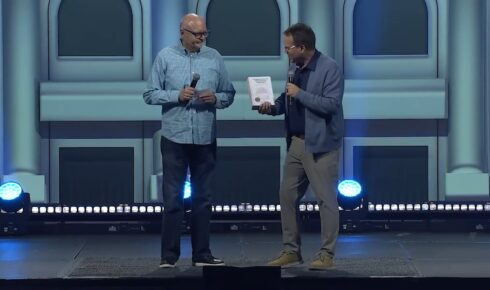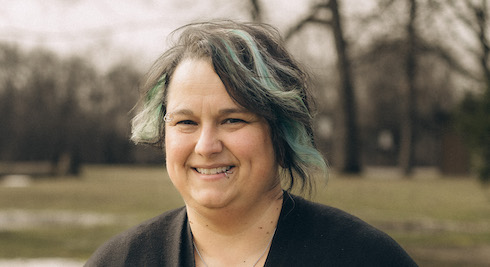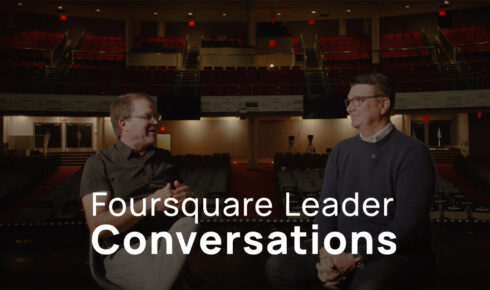A dear retired pastor’s wife I know—an astonishingly spry senior in her mid-90s—told me of a recent visit to her newly assigned doctor for her annual checkup. She said that after each test he performed, the physician would double-check the results, look at her curiously, shake his head and smile. He couldn’t believe what he was seeing.
Blood pressure: that of an athlete in mid-life. Eyesight: 20/20. Heart: as strong as ever. Basically, the picture-perfect image of health. What was her secret?
Did she exercise? Not really, unless you count those old days on the farm and the fact that she had always kept active. Was she a vegan? Not even. She ate healthily but was not petrified of eating bacon or a donut.
Laughing, she asked the doctor what he thought her secret was. His answer: “I think you have the strongest genes I’ve ever seen.” Her secret to a long, healthy life was all in her DNA.
The same is true of churches. The congregations that endure over the long haul and make a lasting impact in their communities have certain markers—values, traits and behaviors—woven within their DNA. These attributes are the reason these churches have remained relevant and effective in their mission through decades of surrounding cultural change.
We sat down with several Foursquare pastors who are serving in churches that have been in Foursquare for at least 75 years. We discovered what makes these churches tick, how they approach ministry, and why they have flourished for so long despite dramatic societal shifts and unprecedented challenges. These churches have been around since the years of the Great Depression. What can we learn from them?
Effective Leadership
One of the key lessons we learned is that effective leadership is paramount to a church’s success. All of the pastors we spoke with indicated that the longevity of their churches is attributable, in large part, to the faithful pastoral leaders who preceded them, implanting values still integral in their congregations today. A leadership style that focuses on mentoring and releasing up-and-coming leaders was a common trait in each of these churches in the past, and it’s a quality still present in these churches currently.
Jim Scott, senior pastor of New Hope (Lubbock First Foursquare Church) in Lubbock, Texas, tells Foursquare.org that strong, committed pastoral leadership has been fundamental to his church’s staying power. Most of the congregation’s senior pastors had long tenures. Founding Pastor Floyd Dawson served for 30 years; his son, Fred Dawson, served for 6; and Phil Demetro served for 22. Jim and his wife, Valinda, have pastored New Hope since 2000.
“Mentoring, equipping and releasing strong leaders,” Jim affirms, is an important factor in a congregation’s health and ability to remain effective in the long haul. “We must mentor, equip and release a new generation of leaders to serve.”
These words are not platitudes. New Hope has developed and sent out scores of leaders through the years.
“The church in its history has sent over 100 pastors, missionaries and ministers from Lubbock to preach the gospel,” says Jim. “New Hope has truly been a ‘sending church.’ To date, the church has planted 10 churches.”
Faithfulness
Ken Swett, senior pastor of Modesto Foursquare Church in California’s Central Valley, also underlines the importance of the legacy left by faithful leaders who served the church in years past. He and his wife, Wanda, have pastored Modesto Foursquare since 1990. The church was planted in 1929 and chartered in 1934.
“Wanda and I feel blessed of God to have been asked to come to Modesto 21 years ago to serve a loving group of people in a well established church,” says Ken. “Before we came, there was a succession of stellar pastors who all did an outstanding job: Allen and Roxie Tolle; Jackson and Lucy Cooper; Ray and Evelyn Singer; and William and Christal Clayton.”
Echoing Jim’s sentiments, Ken confirms the significance of developing new leaders, noting that everyone—not just vocational clergy—is in the ministry.
“One of the reasons Modesto Foursquare is still engaged in effective ministry for the Lord,” Ken explains, “is that we emphasize that everyone is called to serve Jesus in ministry, and that we are responsible to reach out with God’s love to one another.”
It’s no surprise, then, that many young people through the years have been sent out from the church after graduating from high school to attend Bible college, and are pastoring today.
Impacting Future Generations
Scott Orchard, senior pastor of Family Life Center (Sheridan Foursquare Church) in Sheridan, Wyo., is clear about why his church has been around for so many years. He attributes their durability to “faithful people who were willing to reach the next generation.” He and his wife, Wanda, have pastored Family Life Center since 2006.
“I long for people—myself included—to take their talents, giftings and callings and serve the Lord with them,” says Scott, describing his heart for mentoring and releasing leaders. “I am not to force people into doing things that the Lord is not leading them to do. My heart is to see His people love Him, and love other people into the kingdom, and that those they reach would continue the work of the Lord.”
Allen Phipps, senior pastor of Hope Temple (Minneapolis Foursquare Church) in the heart of Minnesota, succinctly describes an outlook on ministry that practically ensures a church will have longevity. Simply put, he says: “God is not done using this church and ministry to reach people.” Allen and his wife, Julie, have pastored Hope Temple since 1982.
Allen himself is an example of how one leader can impact future generations. His call to ministry, he explains, was sparked by “a faithful pastor in my home church who was a great example, and let me try to serve through teaching and worship.” It’s a legacy that he strives to pay forward in his own ministry, and it’s tied closely to the mission of Hope Temple.
“Our purpose as a church body,” Allen states, “is ‘Bringing Hope to a Hurting World.’ We usually play off the theme of hope, and people in the community refer to us simply as Hope.”
In subsequent installments of “The DNA of Longevity” feature series, we will examine exactly how the longstanding ministries we investigated are bringing hope to their communities and beyond, as well as cover other values they have in common that have contributed to their longevity.
You are reading Part 1 in a three-part series.
Read Part 2: The Community and Beyond
Read Part 3: The Holy Spirit and Love
By: Bill Shepson, a Foursquare credentialed minister and freelance writer in Los Angeles


